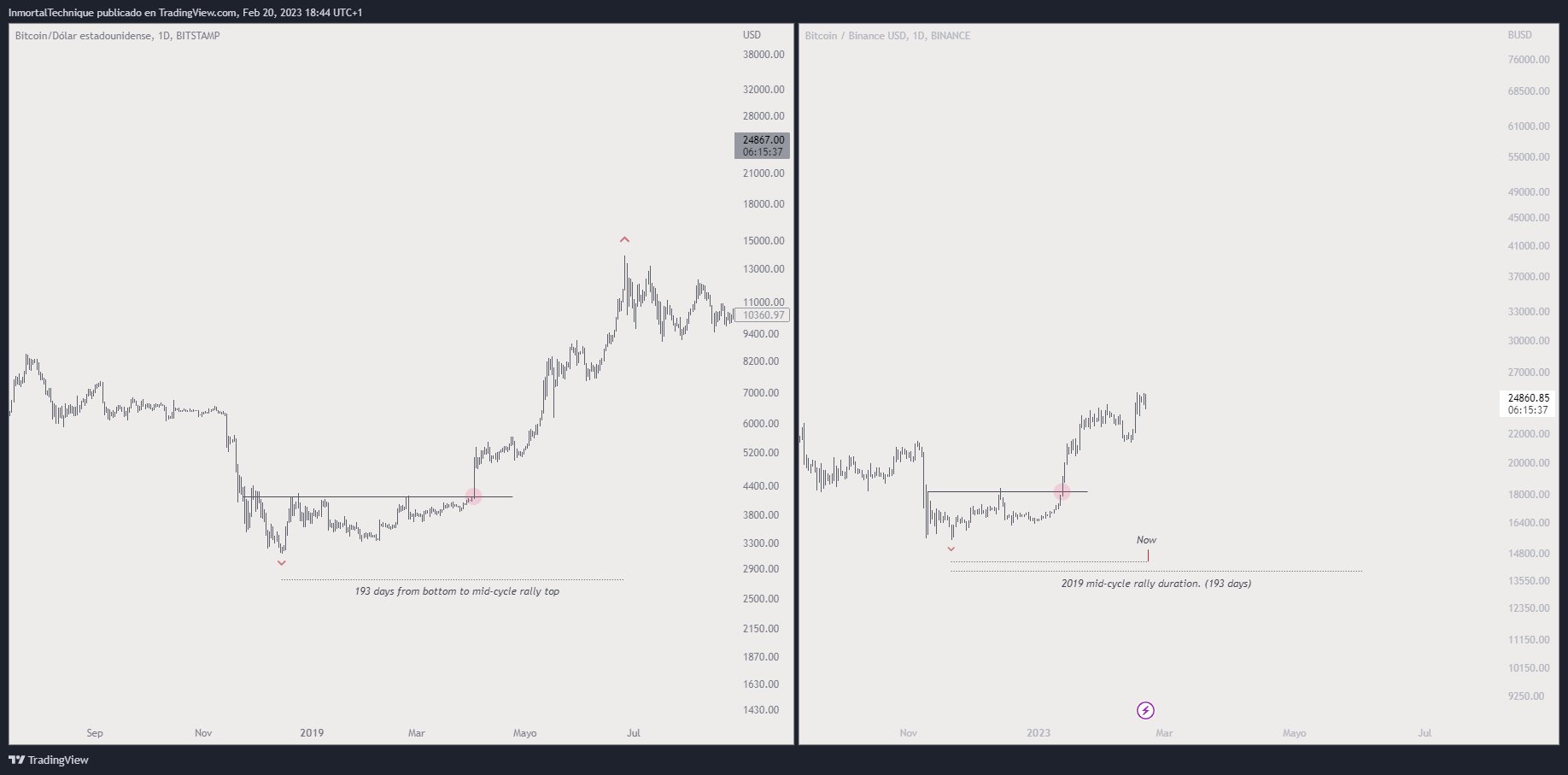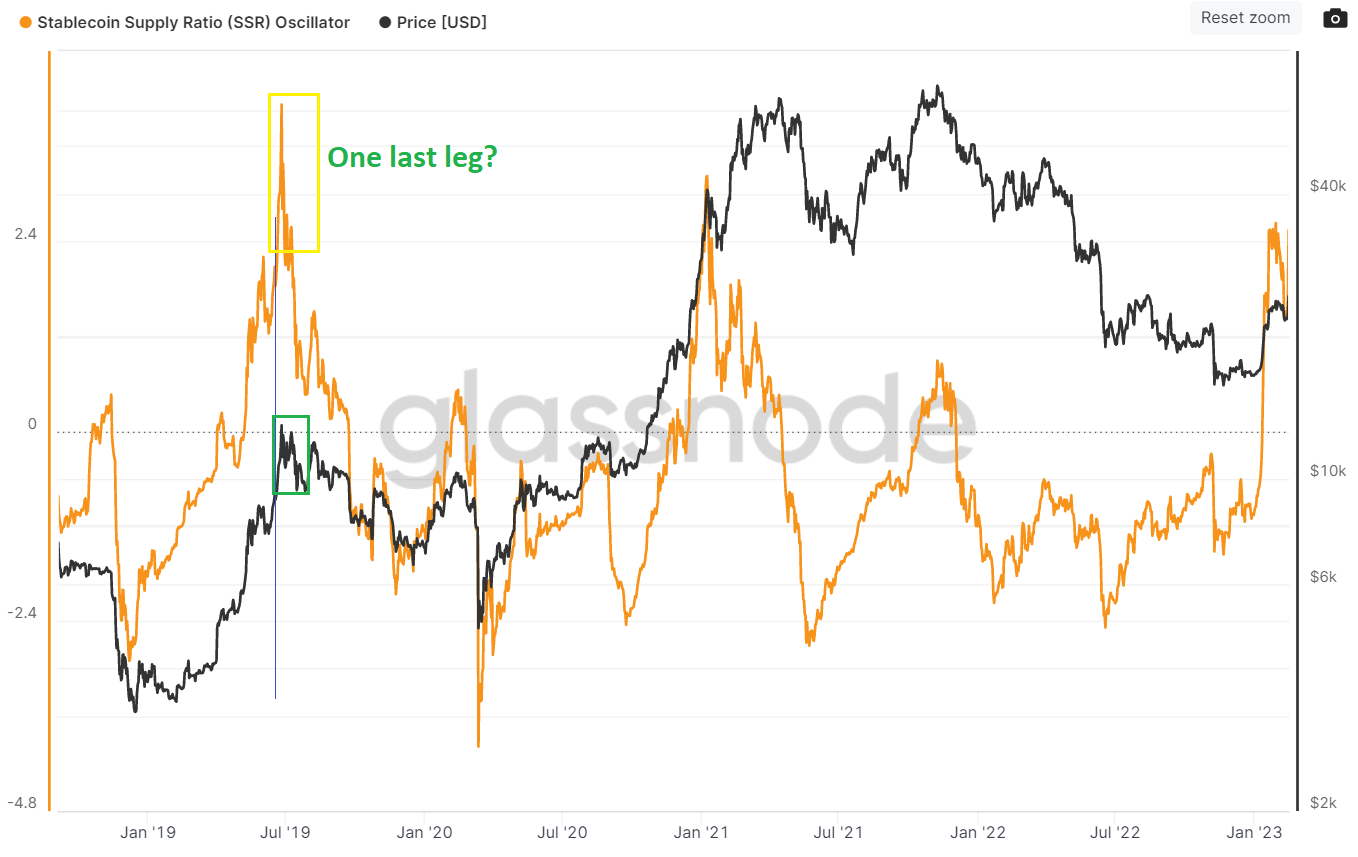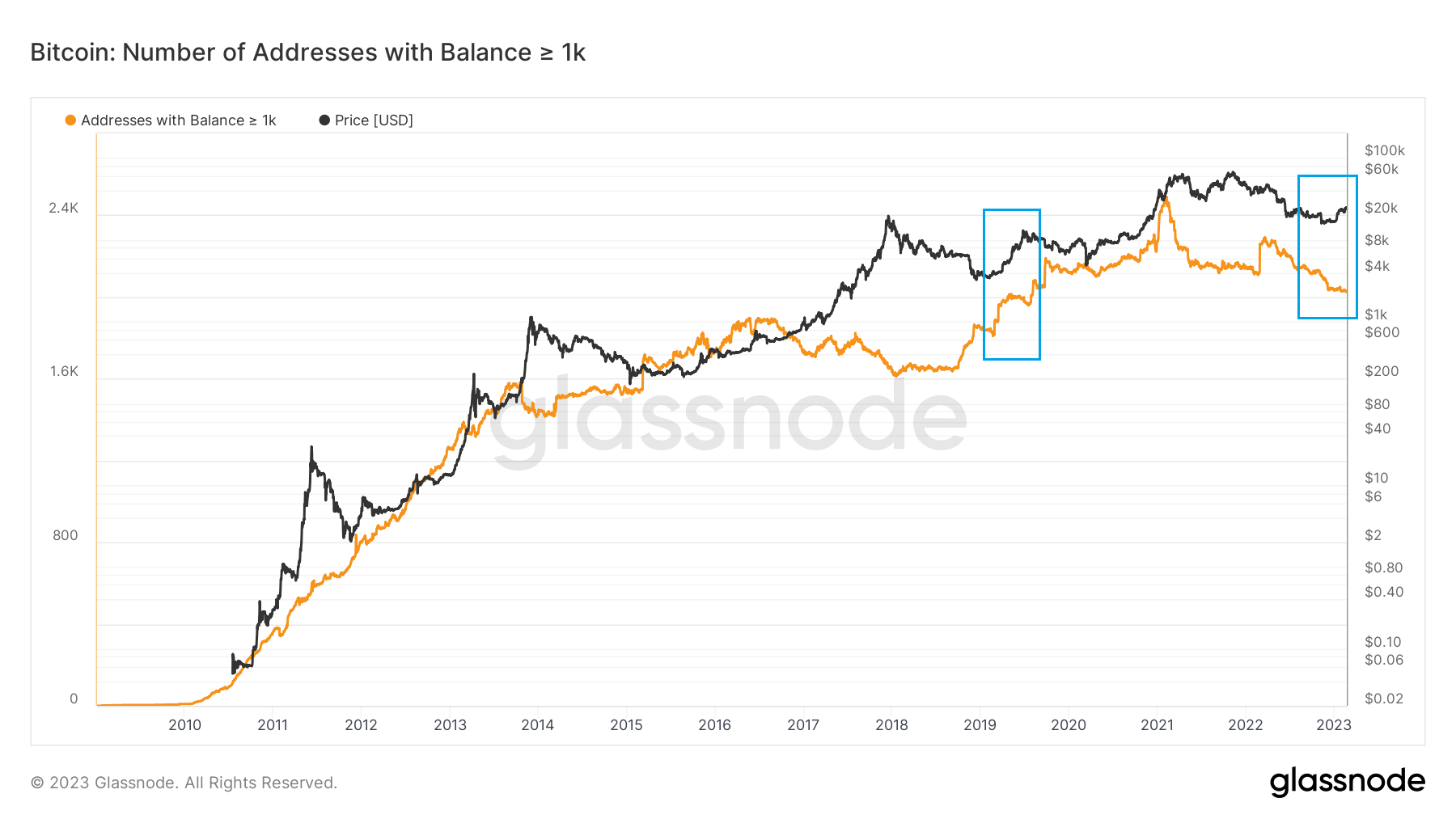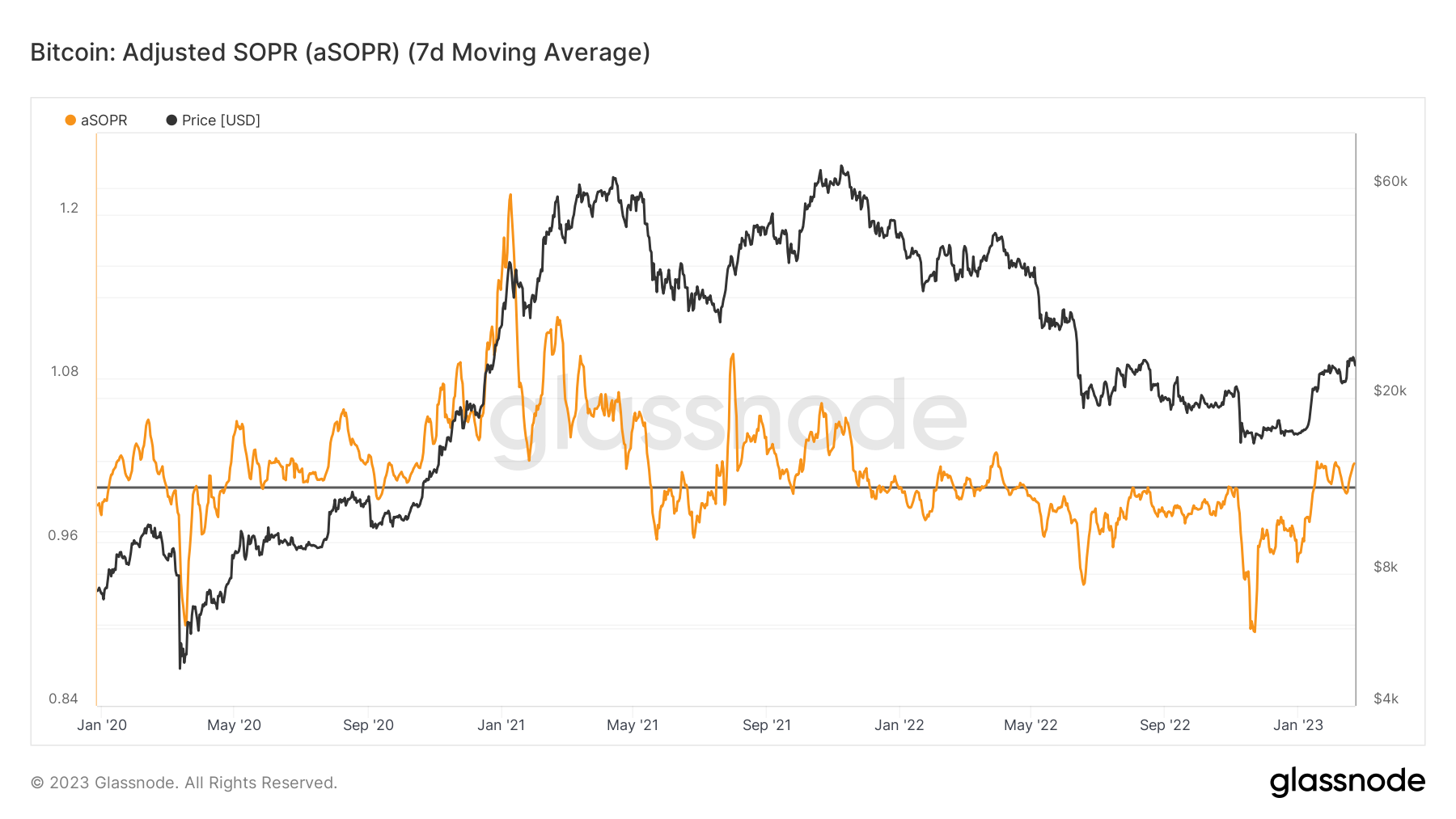The recent rally in the price of Bitcoin (BTC) from $16,500 to $25,000 can be attributed to a brief contraction in the futures market and recent macroeconomic improvements. However, while prices were up, the data suggests that many interested buyers (including whales) were left out.
The recent rally to $25,000 shared many similarities with the 2019 bear market rally, which saw Bitcoin price rise 330% to highs around $14,000 from the November 2019 low of $3,250. Recently, the BTC/USD pair is up 60% from its November 2022 low.
On-chain and market indicators regarding the 2019 rally are sending mixed signals as to whether or not the Bitcoin rally will continue. However, there are strong reasons to believe that the market has reached a crucial turning point where it may either turn into a full-fledged bull market or fall back into a longer-term downtrend.
Let’s look at the top five indicators to understand the current price dynamics in relation to the 2019 bull run.
Bitcoin Tackles Historic Trading Levels
Bitcoin price broke above the 200-day moving average (MA) at $19,600, which could encourage paper traders looking to open a long position. Historically, this metric has acted as a bullish-bearish pivot line, with breaks above it being bullish and vice versa.
BTC/USD typically retests the 200-day MA on a breakout, raising the possibility of a correction towards $19,500. However, this was not the case in 2019, when the price continued to rise without going back to the 200-day moving average.
At the same time, traders are likely to pay attention to the 200-period weekly moving average at $25,100. The Bitcoin price had never dipped below the 200-week MA until November 2022 and recapturing this level could encourage technical buyers to join the bandwagon.
However, until a breakout occurs, traders could continue to sit on the sidelines. Funding rates on perpetual swap contracts are currently neutral, suggesting that traders are waiting for confirmation.
Twitter cryptocurrency trader Immortal found that the market is only at the “middle ground” considering the length of the current rally compared to 2019. The 2019 rally lasted 193 days from the bottom to the top, while they have only past 92 days from the bottom on November 9, 2023.

Immortal goes on to say that if the 2019 timeline fractal comes to pass in 2023, BTC/USD could surge as high as $46,000 in March.
A stablecoin supply ratio oscillator is near the 2019 high
Bitcoin’s stablecoin supply ratio (SSR) oscillator measures the purchasing power of the market. The indicator measures the relationship between Bitcoin’s market capitalization and the supply of stablecoins. Low readings on the SSR oscillator indicate increased purchasing power of stablecoins. Conversely, a spike in the metric indicates overbought conditions.
Bitcoin’s price surge in February 2023 caused the SSR oscillator to reach levels not seen since 2019 and 2021. The indicator suggests that the positive trend could end soon. There is a slim chance of a final push towards the psychological $30,000 level.
However, the data could be taken with a grain of salt due to the regulatory crackdown on stablecoin BUSD, which caused a significant decline in its supply. It could have skewed the SSR oscillator to show overbought conditions.

One of the biggest concerns of the current increase is the lack of purchase of whales. Unlike in 2019, when the number and holdings of BTC addresses with more than 1000 BTC increased as the price rose from the bottom and whales were sold on the current rally. The divergence between the number of whales and the price raises concerns about the sustainability of the positive trend.

Data Highlights Crucial Bullish-Bearish Crucial Point
Investors add pullbacks in an uptrend to their winning positions and this is indicated when the SOPR indicator stays above one. The opposite is true in a downtrend where the bears dominate the market by selling rallies. A metric crossing above 1 is a potential trend reversal signal.
Glassnode’s 7-day moving average of the adjusted SOPR indicator shows that the downtrend has likely reversed. The indicator turned bullish when BTC broke above $20,800 in January 2023. The metric retested the fundamental support level with the price of Bitcoin at $21,800, making it a crucial support level for a sustained uptrend. .
Related: Bitcoin is facing a do-or-die weekly or monthly close with a macro uptrend in play

Similarly, the price has moved above both short-term and long-term holders’ average buy levels, which is another sign of a potential trend reversal. This could be a sign that the market has reached a crucial turning point as on-chain oscillators return to equilibrium.
The metrics also hint that a potential uptrend looks likely as price holds above support at $21,800, $20,800, and $19,600.
A weekly close above $25,100 could encourage technical and derivatives traders to buy on the current rally, but there are some warning signs that the market could be reaching overheated conditions and a quick correction towards levels of $25,100 cannot be ruled out. lower support.
The views, thoughts and opinions expressed here are those of the authors alone and do not necessarily reflect or represent the views and opinions of Cointelegraph.
This article does not contain investment advice or recommendations. Every investment and trading move involves risk, and readers should do their own research when making a decision.




